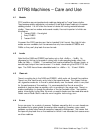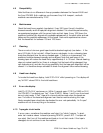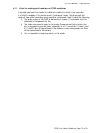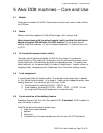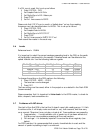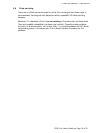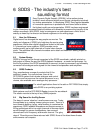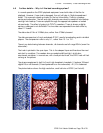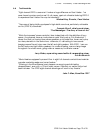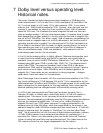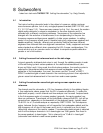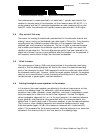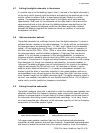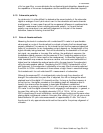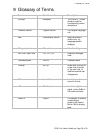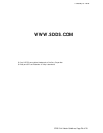8 Subwoofer s
SDDS Print Master Guidelines, Page 24 of 26
of its low pass filter, or even eliminate the s ynthes i zed s i gnal altogether, depending on
the capabilities of the s cr een loudspeakers and the auditor i um’s acoustical response.
8.10
Subwoofer polarity.
As a s i de note, it is often difficult to deter mine the correct polarity of the s ubwoofer ,
digital or analogue. Even if pink noise i s sent to the s ubwoofer and centr e channels
simultaneously, in many cases there will be no appar ent difference i n combined wi de
band S PL measurement when switching s ubwoofer polarity. In the end the bes t
polarity may come down to an aesthetic j udgement on the par t of the cinema
technician, based on listening to actual films.
8.11
R ule-of-thumb met hods.
Measuring the l evel of a s ubwoofer with a wi de-band S PL meter is of questionable
value except as a r ul e- of - thumb method to r e-check a t heat r e that has already been
properly calibrated. The r eas ons for this include the fact that the meas ur ed acous ti cal
output of a s ubwoofer (or any loudspeaker system) depends on the bandwi dth of the
signal ultimately being meas ur ed. That will be affected by the bandwi dth of the i nput
test signal, any equalizer or low pass filter settings, the auditor i um’s response, the
loudspeaker cabinet response, and the accur acy of the C wei ght i ng r es ponse at low
frequencies of the S PL meter used for the meas ur ement. A s ubwoofer signal with a
wider bandwidth may measure the s ame as another with a narrower bandwidth but
higher level (as indicated by analyser bands within the pass band of the s ubwoofer ),
using the s ame s peaker cabinet. Considering the DFP-D3000, the bandwi dth of the
pink noise s ent to the s ubwoofer is affected by a l ow pass filter that can be adj us ted
from 80Hz to 330Hz—a di fference of three octaves or eight times in acoustical energy.
No s tandar ds exist for such wide band S PL measurements of subwoofer s .
Although the meas ur ed S PL of wide band pi nk noise thr ough the s ubwoofer will
change i f the s ubwoofer ’s low pass filter is adjusted, this will not change the actual
playback level of the di gi tal LFE channel from film. So l ong as the filter frequency is
not set too low, the s ignal s recorded on the dubbi ng s tage will determine what is
heard i n the cinema when the pr oper in-band gain difference i s established
acoustically, as previously described. This is why an engineer who uses a wi de- band
SPL meter to s et the di gital subwoofer level is engaging i n self-deception. In general, a
low pass filter setting for the di gital subwoofer (LFE) of 125 Hz, 160 Hz, or even
200 Hz should s er ve i n most installations, and all settings should s ound the s ame when
playing di gi tal multichannel material. A l ow pass filter setting of 125 Hz will give a wi de
band s ubwoofer SPL pink noise meas ur ement of appr ox i mat el y 91 dBc. T his rule-of-
thumb r es ult is only appr ox i mate and s houl d not be us ed f or the pr i mar y alignment of
a t heat r e.



